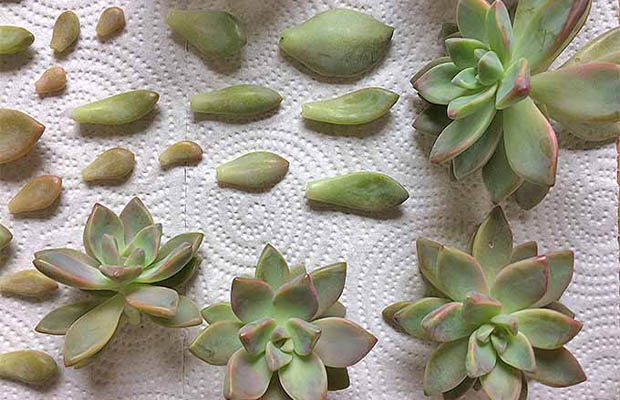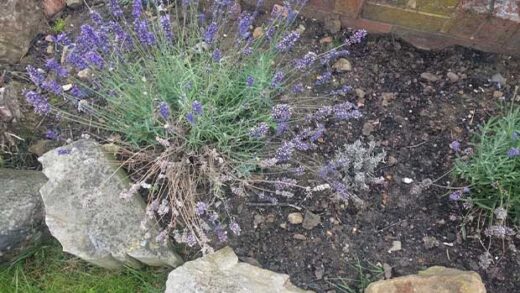The succulent is one of the most effective and simple-to-grow plants in nature. Although it’s true that succulents are much simpler to grow than a lot of other plants, I’ve found it a little difficult to grow them in my dry Utah climate.
Learn how to propagate succulent from leaves with this step-by-step tutorial.
Table of Contents
3 Main Succulent Propagation Techniques
When a new plant is created using a component of the parent stock, this process is known as propagation. This component might be a mature plant’s seed, leaf, cutting, offset, or offset. With succulent propagation, there are 3 main interesting techniques that you could try out:
- An easy way to grow your succulent garden without making a lot of effort is through dry propagation, also known as air propagation. Succulent components can be propagated using this technique by setting them on a tray.
- Rooting succulent components in water is a process known as water propagation.
- By laying the calloused component on top of the well-drained soil, soil propagation is a popular method for multiplying succulents.
This blog’s main topic will be how to propagate succulents using the soil propagation method.
How To Remove A Leaf For Propagation?
You can only take certain types of cuttings from your succulents, depending on its genus and species. For instance, cuttings or leaves can be used to propagate the majority of delicate Sedums and some Echeverias.–though Both times, I use leaves.
On the other hand, you cannot propagate aeoniums with just a leaf because they can only be propagated through cuttings. In other words, each variety of succulent is unique, so if you’re unsure of what will work, experiment (like I did) and see what happens! You can start by clicking here to look at these seven succulents, all of which I’ve found to be incredibly simple to grow.
Simply gently twist a leaf off the stem to take it for propagation. Make sure the pull is clean and leaves nothing on the stem. It’s even acceptable to remove a small portion of the stem.
Make sure you get all the way down to the stem because every time I’ve broken off a leaf before the stem, it’s always died. It is advantageous to have a clear view of the leaf’s base as you are removing it.
No need to worry if you’re reluctant to remove a leaf from your own plant. Actually, The Succulents Source sells leaves that can be used for propagation. and start propagating!
It’s a very cheap way to begin a collection of new plants, plus it’s a lot of fun to grow succulents from seed to baby plant to plant!

How To Propagate Succulents From Leaves?
- Take a leaf that has fallen from one of your succulents to start. If you’re hesitant to remove a leaf from your ideal succulent or are simply concerned about doing it incorrectly, this is preferred. To increase your chances of success, only select full, plump leaves when searching for fallen ones. Simply proceed to gently pull one leaf off the stem if none have fallen already. Succulent plants, particularly Echeveria, are delicate, so you should take a leaf off the plant gently by holding the stem and twisting to completely remove it. Poor cuttings may prevent the leaves from rooting.
- To prevent the cut ends from rotting when planted, place the leaves on a paper towel to dry out. Transfer the leaves from the paper towel where they had been drying for a couple of days to the potting soil for succulents or cacti.
- The soil should be misted with water a few times a week, and the leaves should receive plenty of bright, filtered sunlight. In general, roots begin sprouting after about two weeks, and baby plants start to show up after about eight weeks. However, the length of time varies depending on the kind of succulent you are trying to propagate, the season, the temperature, and the humidity.
Read More: How Often To Water Succulents?
How To Propagate Succulents From Offsets?
As it is simpler than using leaves or stem cuttings, most succulent parents prefer to propagate their offspring from offsets. If you don’t want to wait for the plant to develop leaves, offset propagation is incredibly simple and straightforward. For this technique, succulents like Haworthia are ideal.
It is strongly advised to wait until the offsets are roughly half the size of the parent plant before separating them from it to make sure they have enough nutrients to survive after being cut off from the parent plant. In order to find the rooted offset from the parent plant, you might want to start by taking the plant out of its container. During this time, you can also repot the plant and check the root structure. Then, simply twist the offset to remove it from the mother succulent’s roots. Even if some roots are torn, the offset will have a chance to grow its own roots, so don’t be concerned. After removing the offsets successfully, allow them to dry for one to one day. After they have dried out, plant them in cactus soil that drains well and water them thoroughly.
Cutting off the offset’s stem or pulling offsets from the parent plant with roots are two ways to propagate from offsets. So, if you want to try doing it with stem cuttings, scroll up and read our instructions on how to take a proper cutting. Ensure that you only use sterilized pruning tools. After letting your cuttings dry out, plant them in a potting soil that has been well-drained. Within a few weeks, roots should start to form.
It’s easy to take care of the offsets. To prevent etiolation or sunburn, give them a few hours of morning sunlight or afternoon shade. One piece of advice is to only water them thoroughly when the soil is completely dry.
How To Propagate Succulents With Seeds?
Succulent seed propagation is typically the most time-consuming method of growing new plants, but if you have the patience and time, give it a shot! Seeds of mature plants are located in the swollen base of the flower (AKA the “fruit”), and they can be collected when the succulent is done flowering. The seed may occasionally be orange-colored dust, which can make it a little trickier to spread. Use fresh, dry seeds in the early spring, whether you’re collecting seeds from mature plants or purchasing them, to give them plenty of time to grow before going dormant for the winter.
After filling a planter with cactus or succulent soil and thoroughly watering it, prepare your seeds by soaking them in warm water for about 30 minutes to soften the seed coat. Spread the soaked and softened seeds over the primed soil, leaving spaces between them to allow for growth. Next, cover the seeds with just enough “top dressing,” like sand or sifted cactus/succulent soil, without burying them. Water the seeds every day with a fine mist using a spray bottle, letting the top surface dry completely in between applications.
Keep the planter in a warm area, preferably one that is between 75 and 80 degrees. To create a greenhouse effect, it’s a clever idea to cover the planter with clear plastic of some sort (ziplock bag, plastic bucket, etc.). For people living in cold or dry climates, this is a great option because it will keep the seeds warm and moist. In about two weeks, the seeds will start to sprout, and after about six weeks, you should be able to water every other day.
You can experiment now that you have a basic understanding of the various propagation techniques. There is always a small learning curve when propagating succulents, so have patience. Despite our best efforts to give you the knowledge you need to succeed, each person’s propagation experiences will be unique. The more you practice, the more likely it is that you’ll succeed!
When To Plant Propagated Succulents?
Most succulents take several months to grow to “normal” size–while some may take as long as a year. In other words, although this process isn’t particularly quick, it does the job.
Cover the roots with soil as soon as you notice them. They’ll stay cool and have access to water in this way. To keep the soil moist, keep watering.
The mother leaf doesn’t require any action from you. The mother leaf will start to shrivel up and die as the baby succulent grows bigger. The mother leaf will naturally fall off and separate from the baby leaf at this point, so everything is perfectly normal.
After that, make sure the baby succulent gets plenty of water every day. After that, you can transfer it to another pot or put it in a different arrangement once it has a strong root system and is developing on its own.

















